Dress baby in layers, gate-check your stroller and bring noise-canceling headphones
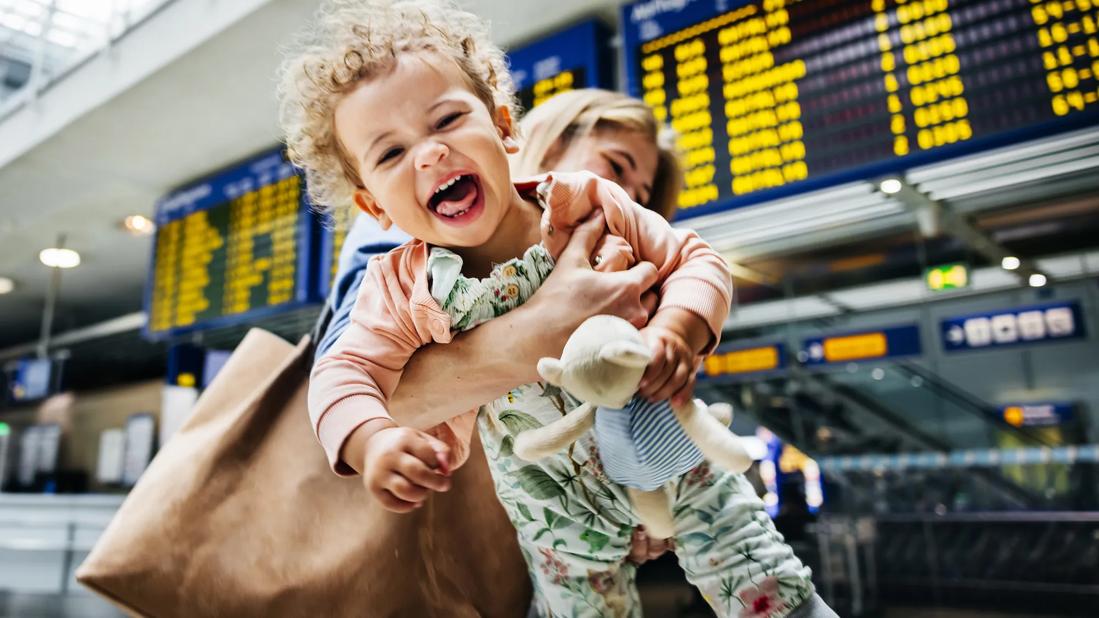
Some people find flying stressful because most of the trip is out of their hands. After choosing the flight and your seats, you have very little control over the experience. But traveling with an infant can bring that stress to a whole new level.
Advertisement
Cleveland Clinic is a non-profit academic medical center. Advertising on our site helps support our mission. We do not endorse non-Cleveland Clinic products or services. Policy
“Flying with a baby is stressful for any parent,” notes pediatrician Lisa Diard, MD. “You can’t control the environment or your child’s reaction to what’s happening around them.”
The good news is that a little preparation can help reduce that stress. Dr. Diard shares tips to help you prepare for what may happen before, during and after your flight with baby.
When you’re traveling with a small child, pre-flight prep begins the minute you decide to take a trip. Dr. Diard answers some common questions about planning to fly with a baby in tow.
Newborns can fly as early as 7 days old — any younger and you may need a permission note from their pediatrician. Some airlines have their own restrictions, too, so be sure to check before you book your flight.
That said, Dr. Diard doesn’t recommend traveling with a child that young unless it’s necessary.
“It’s safer to fly when children are at least 3 months old,” she advises. “By that age, they typically have their first round of vaccinations and their immune system is a little more developed.”
If you’re traveling internationally, talk to your pediatrician about specific vaccination requirements.
Documentation and proof of age requirements vary by airline, but here’s a look at what you may need to have with you.
Advertisement
“As soon as you purchase your tickets, find out what documents you need and put those wheels in motion,” Dr. Diard says. “It’s one less thing to stress about as your flight gets closer.”
Technically, airlines consider any child under age 2 a “lap infant,” and they don’t require their own seat. But both health experts and airline safety experts strongly advise purchasing an additional airline ticket for your infant.
Doing so offers priceless safety and comfort for your family. “Traveling with your baby in the seat next to you, in their car seat, is much safer for the child than sitting in your lap,” Dr. Diard points out.
Experts recommend that babies:
Another helpful health tip: “Whenever possible, give your baby the window seat to keep them away from the aisle,” she adds. This lessens their exposure to other people and protects them from the drink cart and off-balance passengers headed for the restroom.
Regardless of your child’s age and stage, take a moment to think about the timing of your flight and how it fits into your child’s routine. For newborns, the timing of your flight may be less critical because their schedule is more adaptable. But after 9 months, a baby who stays on their routine is often a happier baby.
But remember to consider your own needs, too.
“You might choose a nighttime flight, thinking your baby will sleep through it,” Dr. Diard illustrates. “But if that means you don’t get any sleep that night, it won’t make the next day any easier.”
Babies can get fussy if they’re either too hot or too cold. The problem is that when it comes to temperature, planes are unpredictable.
“Some airplanes are warm and stuffy, especially before takeoff, but you’ll be freezing 30 minutes into the trip,” Dr. Diard says. “That’s where layers come in.”
Dress your child in layers you can remove, or bring a warmer layer or blanket that you can easily access during the flight.
Advertisement
When you’re traveling with a little one, you want to prepare for every scenario that might come up. But you can only fit so much in your carry-on, so you’ve got to prioritize essentials.
For older babies, focus on things to keep them busy and happy, like:
For younger babies, plan your bottles, either bringing expressed breast milk or powdered formula and sterile water. If you plan to breastfeed during the flight, you may want to pack a cover to help reduce distractions for your baby while they’re feeding.
But good news: You don’t need to give up precious carry-on space for milk or formula. According to the Transportation Security Administration (TSA), “Formula, breast milk, toddler drinks, and baby/toddler food (to include puree pouches) in quantities greater than 3.4 ounces or 100 milliliters are allowed in carry-on baggage and do not need to fit within a quart-sized bag.”
Still, Dr. Diard says it can be helpful to touch base with your airline ahead of time to be sure you’re clear on the rules.
“You may be restricted in the volume of liquids or how they have to be packaged,” she notes.
Pre-flight preparation is half the battle. But it’s also critical to have some tricks up your sleeve at the airport and during the flight.
Advertisement
She answers some more common questions about dos and don’ts during your flight.
Don’t give your child over-the-counter medication like diphenhydramine (Benadryl®) to make them tired before you get on the plane. It’s just not safe.
“This medication may cause side effects in small children,” Dr. Diard warns.
Airlines allow you to use your stroller throughout the airport and right up until you board the plane, when you can “gate check” your stroller. An attendant will tag it on the jetway and store it below the plane. When you arrive at your destination, they’ll bring the stroller up and present it to you as you exit the plane.
“Gate checking is a really nice convenience,” Dr. Diard says. “It alleviates a lot of stress for parents as they move through airports.”
The airline cleaning crew will have cleaned your seat before you board, but Dr. Diard recommends having some antibacterial wipes handy when you get on the plane. A quick cleaning of all the plastic surfaces in your seat area eliminates any germs left behind and can provide you with some peace of mind.
“A lot of what we worry about on planes is respiratory because of the recirculated air on the plane,” Dr. Diard shares. “It’s just one of the hazards of flying with a young baby. But anything you can do to eliminate their exposure to germs can help.”
Advertisement
Try to change your infant’s diaper as close to boarding time as possible. But if your baby chooses to have an in-flight blowout, you’ll have to do a dreaded airplane diaper change.
The good news is that flight attendants can help you find the best place to change your baby.
“They know what’s going on throughout the plane,” Dr. Diard says. “Sometimes, there’s a whole row of open seats you can use. Some planes have changing tables in the bathrooms. Other times, you just have to put the changing mat on the closed toilet and do your best.”
Just be sure your diaper bag is stocked so you’ve got everything you need on hand, should the time come.
Changes in cabin pressure during takeoff and landing can cause ear pain for babies, which can be worse if your baby has a cold or congestion. In that case, Dr. Diard recommends giving your child some acetaminophen (Tylenol®) an hour before takeoff.
Even if your baby isn’t congested, she suggests having them suck on a pacifier or drink a bottle during takeoff and landing. Swallowing helps keep their ears open.
Cabin noise and airplane engines can be loud, especially during takeoff. To protect your child’s hearing, you can use:
“For young infants, you can just put petroleum jelly on a cotton ball and place it in their ears,” Dr. Diard suggests. “It should stay in without falling out and will muffle the sound.”
You’ve made it! The airplane is on the ground at your destination. Before you grab your gate-checked stroller, check the seat area to make sure you didn’t leave anything behind. Once off the plane, clean everyone’s hands to remove possible germs — especially older babies and toddlers who were likely touching everything.
“Just remember, no matter how the flight went, you made it through,” Dr. Diard says. “Put it behind you and enjoy making new memories in a new place with your little one.”
Learn more about our editorial process.
Advertisement

Making a health plan with your doctor before you leave will make it easier to sit back and enjoy your flight

Among other benefits, a little time away can help make you more creative, decisive and focused

Setting realistic expectations and scheduling downtime can help reduce stress and make your time away more enjoyable
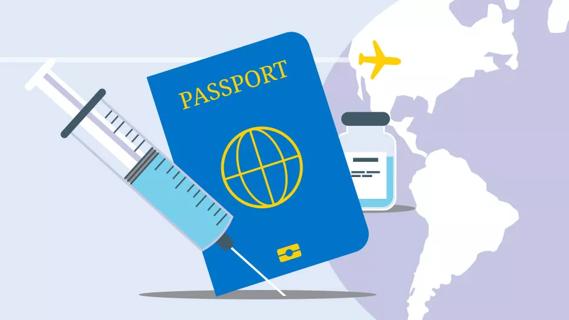
Plan early — getting the right vaccines can help you stay healthy on your travels
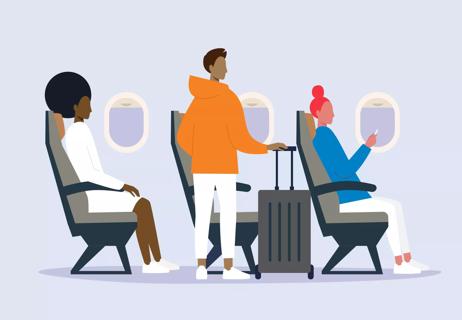
Flying can cause dehydration and bloating and make you feel tired and stressed

When the drive is familiar or monotonous, ‘procedural memory’ can take the wheel
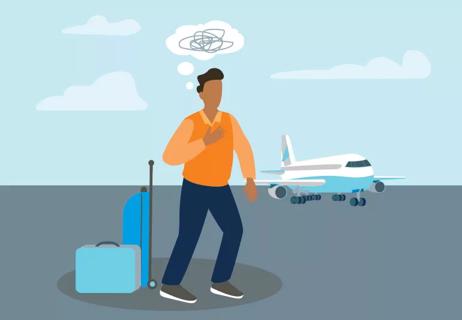
Create a checklist, reflect on your needs and ask for help when unexpected delays occur
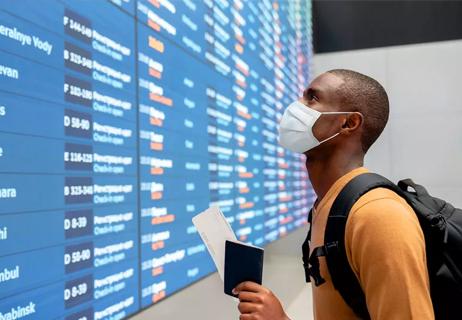
Protect yourself whether you're on a plane, ship or in a car

Babies can get congested easily, but you can calm their cough by keeping them hydrated, using nasal drops and running a humidifier

Weight loss may cause loose, sagging skin and muscle loss to your rear

Several conditions, like vitiligo and fungal infection, can cause a loss of pigmentation, leading to white spots or patches on your skin